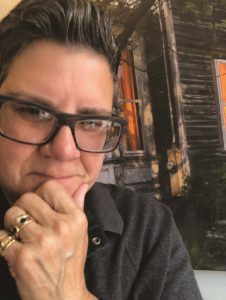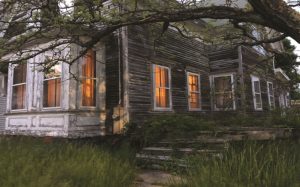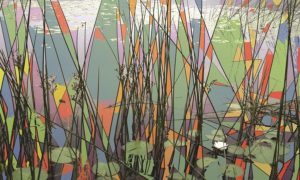“I love this place,” Angela Russo says of Provincetown. Russo is a photographer and the gallerist of Angela Russo Fine Art/Karilon Gallery, the cozy art-bedecked space at 447 Commercial St. in the East End that she has managed since 2005.

“It’s like no other,” Russo continues. “You have to be a part of Provincetown, somehow, to feel and understand it. You don’t get these kinds of images from staying here a few days or a week. I like to observe things. I plan a lot of my shoots — I don’t just go out there and do it.”
Russo is a great talker — she makes her points with charm and humor and extraordinary emphasis. She encapsulates with ease, and she’s passionate about what she likes.
At the gallery, she sells prints of her photographs, which she produces digitally on fine, exotic papers and other surfaces, such as canvas. She also sells the impressionist oil paintings of centenarian Ilona Royce Smithkin, the “ilon” of “Karilon,” and the erotically charged male figure paintings of Bruce Sargeant, the satirical persona (and queer riff on John Singer Sargent) of artist Mark Beard.
Like most of the people who settle in Provincetown, Russo has a story. Her journey to becoming an art photographer, master printer, gallerist, and home owner in this town and the South End of Boston is filled with personal setbacks, unique achievements, and acquired smarts.

She hails from Canastota, a small town in upstate New York. “When I was a teenager, I used to start rumors about myself for fun, to see how they’d recirculate,” Russo says. “A lot of the people I grew up with turned out to be gay. None of us knew at the time. None of us was out. A lot of them died of AIDS.
“I have four older brothers,” Russo continues. “I’m the accident. I am the only girl. I was a change-of-life baby. I popped out of my mother when she was 42. I was always astonished when somebody had a young parent. That kind of made me an adult more rapidly. I was my mother’s confidant. She and my father really didn’t get along, though they stayed together. It’s Catholic, baby. It’s kind of like a dare.”

Russo left for college in Boston at age 18 and didn’t look back. “From the last year of high school, I was shooting film,” she says. “I already knew how to process film.” She started working at a professional camera and equipment store to make ends meet, though the men that worked there weren’t so sure about it. Russo says she was told, “ ‘Would you like a job? I have to talk to the guys about it, because we’ve never hired a woman. I have to see if they’ll allow that.’ They called me back. ‘You’re hired.’ ”
Russo is proud of her success as a woman in the photography world at a time when the discrimination was fierce. She worked as a photographer’s assistant, then cultivated a career on her own, shooting ads for Filene’s, Neiman Marcus, Clinique, Lacoste. “I had Ralph Lauren when they had cosmetics,” Russo says. “I had big corporate clients.”
She also shot, under a pseudonym, for Gay Community News, an influential Boston weekly in the late ’70s. “I’m part of the history of the gay community,” Russo says.

Her life has been punctuated by medical crises. She got colon cancer at the age of 31 and survived. She fell on a loading dock and seriously injured her leg and lower back. She’s had car accidents that weren’t her fault and seven spine fusions. She had a brain aneurism in 2008 that was first diagnosed as a brain tumor. “It’s been an awful trial of a life,” Russo says.
Whenever she was laid up, she’d study photography — the equipment, the printing processes, the techniques. When digital started taking over the industry, she embraced it, learning everything she could.
“I went back to school, to the New England School of Photography, just for the digital work,” Russo says. “I was 40 with 20-year-olds, and I was very unhappy about it. I started retouching, layering, color-correcting. Very intensive. Took more classes. Started buying equipment. I’m kind of like a machine wizard, okay?”
She also started showing her work and thinking in terms of art photography. That led her to settle down in Provincetown, buy a house, and take on the Karilon Gallery.

“I’m into the work,” Russo says. “You know how many years it took me to print on those crazy papers? It’s my edge — color. Color makes me crazy. I want it to look like you want to eat the color. I want it to be absolutely luscious but real. I come from transparency film. Slide film. I’m going at the art of it from the scientific end. That’s my artist’s statement.”

Russo is also a bit of a collector. She owns many vintage contact printers, for example, that she fills with miniature dioramas depicting gay murder mysteries. She’s shown them, photographed them, sold them, and contemplates trying it again here in Provincetown.
“All of what I do comes from my upbringing, my hardships, all that I’ve lived through,” Russo says. “I’ve got to have quality: that’s my driving force. Very few people would spend on ink what I spend. Can you even tell that my work is varnished? Twice? You can’t even see it. It has to be.”



